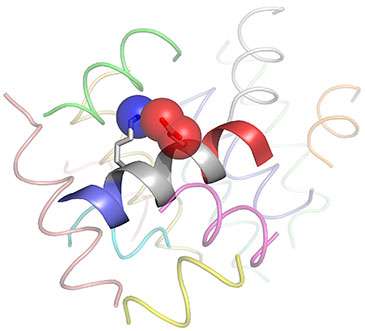Scientists shed light on controversial theory of protein structure

A team of chemists, biochemists and mathematicians at the University of Bristol have published a paper in the journal Nature Chemical Biology, which explores how protein structures are stabilised.
There are many forces that hold together the three-dimensional, functional structures of proteins. Despite considerable effort, understanding of these forces is still quite rudimentary. The research from the Bristol team aimed to dissect out some of these forces by reducing the complexity of the problem.
Proteins are chains of amino acids linked together by so-called amide bonds. These chains respond to water to fold up into their preferred 3D structures. One of the substructures in the hierarchy of folded proteins is called the a-helix. It is this simpler structure that the researchers focused on.
Dr Emily Baker conducted the research in the laboratory of Professor Dek Woolfson. She explains: 'The amide bonds can be thought of as tiny bar magnets. When an a-helix is formed these all line up. For almost 40 years it was thought that the smaller bar magnets, which are known as dipoles, add up to give one large effective magnet, called the helix macrodipole.'
This macrodipole, which results in overall positive and negative charges at the ends of the helix, has been used to explain many observations in protein structure, stability and function. However, the Bristol team's precise experiments on fragments of proteins that form a-helices, but without the complications of the rest of the protein, show that the effects of the helix macrodipole are imperceptible compared with local effects between other charged atoms in the molecule.
As Professor Woolfson puts it: 'We are not saying that the helix macrodipole doesn't exist, it is just that it is very weak and its influence is far less than previously thought. Indeed, it is trumped by the local effects that we studied. In short, we do not need to use the macrodipole concept anymore to explain the vast majority of phenomena that have been attributed to it in the past, including in textbooks.'
More information: "Local and macroscopic electrostatic interactions in single α-helices." Nature Chemical Biology (2015) DOI: 10.1038/nchembio.1739
Journal information: Nature Chemical Biology
Provided by University of Bristol




















